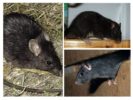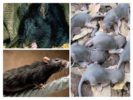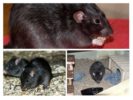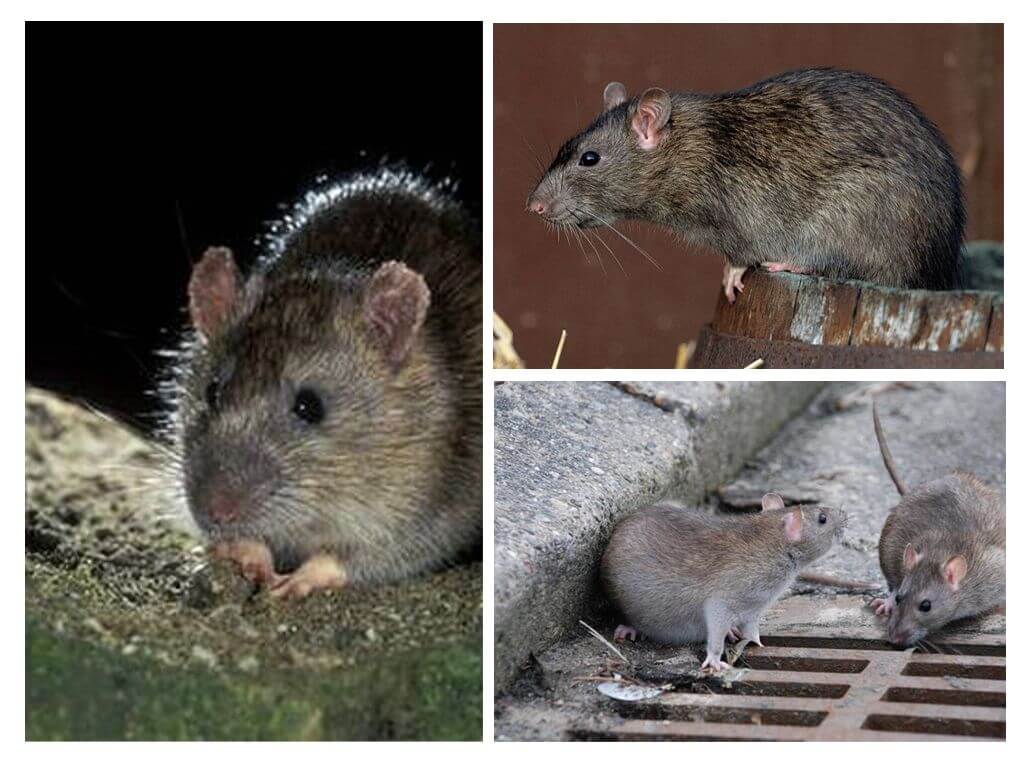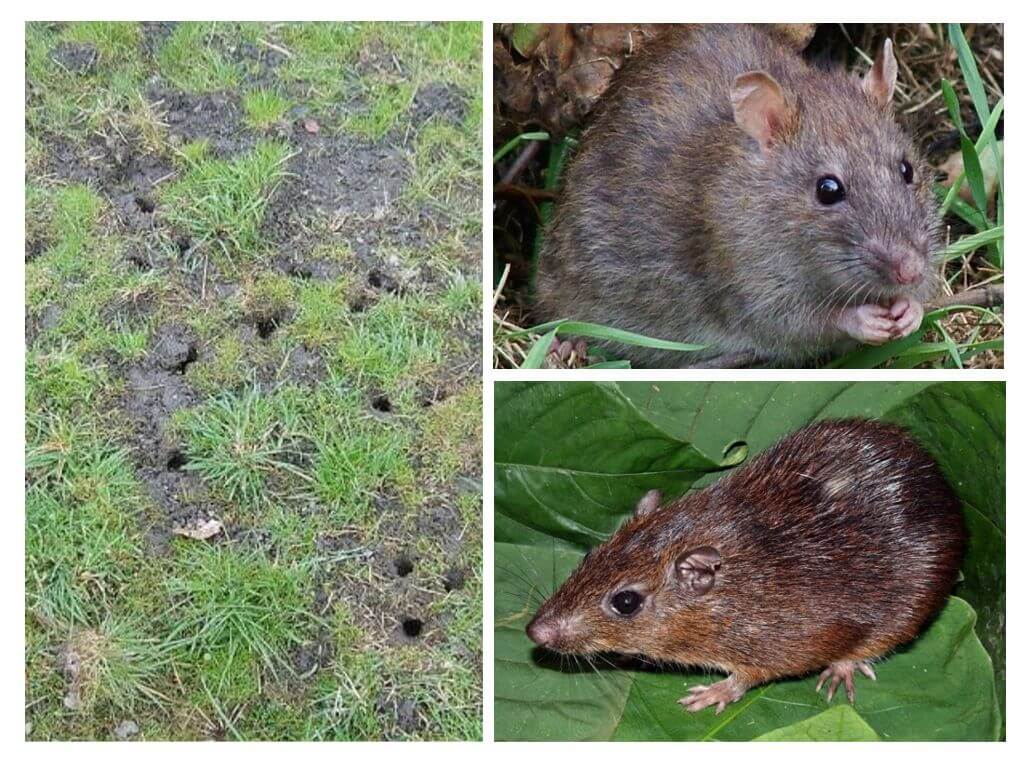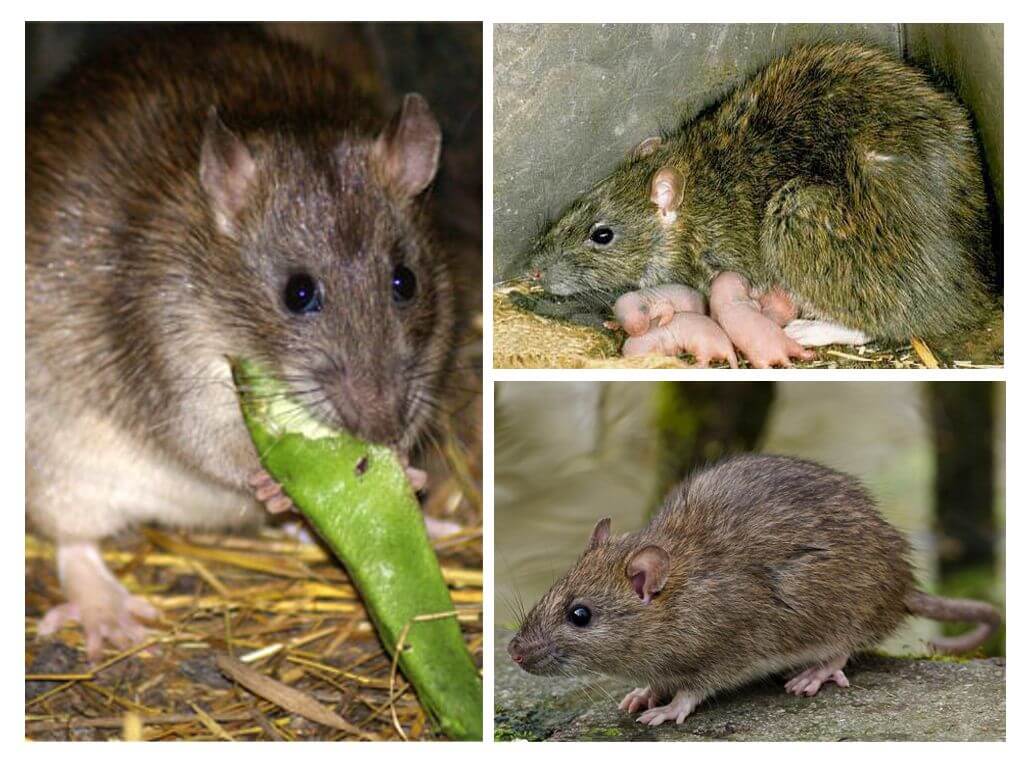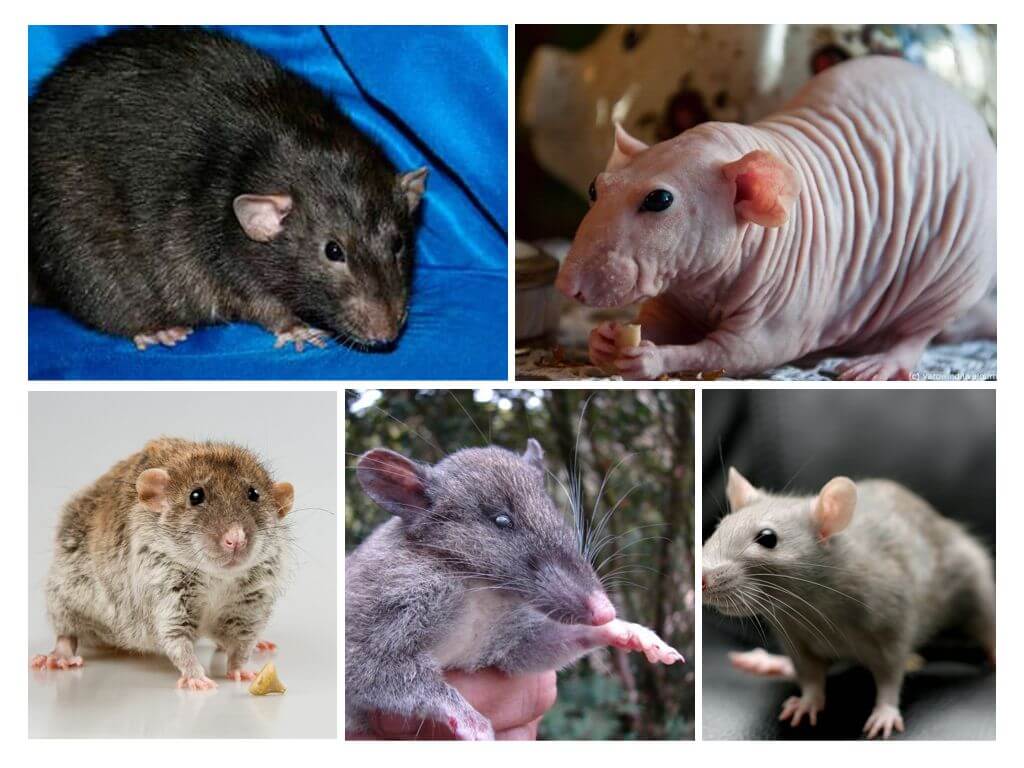- Black rat
- Rat breeding
- Rodent life
In the XIV century, partly due to black rats, one third of the European population died. The animal spread a deadly infection - the plague. Now the rodent is appearing less and less among people, giving way to a larger relative - pasyuku. But it remains a dangerous pest, because it destroys food supplies, spoils trees and suffers serious diseases.
What does it look like
The black rat is small in size. The length of her body does not exceed 22 centimeters, and the weight ranges from 130 to 400 grams. The tail of the pest is longer than the body and grows up to 29 cm. It is densely covered with hard wool. The color is the same both above and below.
Interesting!
This type of rat is the smallest and most agile.
The muzzle of a rodent is elongated with black eyes. The ears are rounded, larger in size than the pasuk, but smaller than the mouse. They are thin, pink and lightly coated with wool.
The color of the black rat is of two types:
- Dark, close to black. Outer hair with a metallic sheen. The abdomen is ash or gray.
- Color, like a pasuk, but a little lighter. The tummy is white or light yellow.
The legs of the animal are short. The hind limbs are larger than the front. Fingers are tenacious and have sharp claws. Thanks to them, the rat masterly moves on any surface.
Photos of a black rat demonstrate how much it differs from a pasyuk.
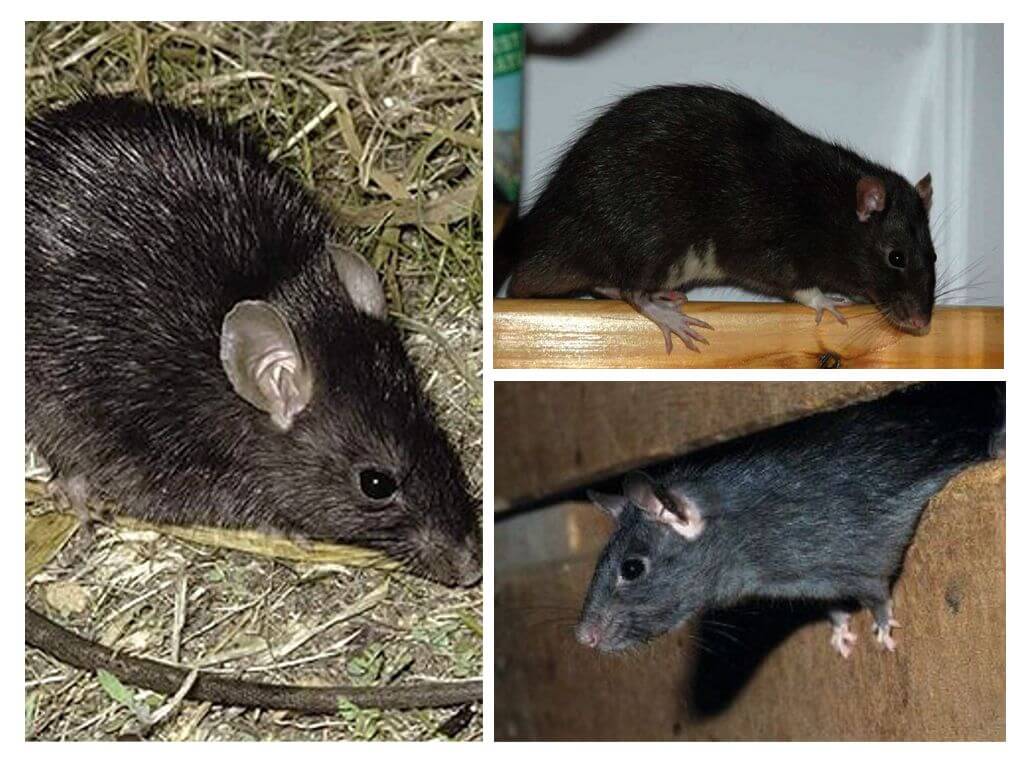
Where does he live
The rodent is not attached to one habitat. The black rat climbs into ships, trains and planes. She runs across thin wires, scrambles along the walls and pokes a curious face into any gap.
The most common types:
- Ceylon. It lives on the island of Sri Lanka.
- Asian Distributed in Asia, Afghanistan, India.
- Mauritian Lives on the island of Mauritius.
- Oceanic Settled around the world thanks to man.
The black rat, unlike the gray fellow, is not tied to a source of water. Therefore, she likes to settle in the attics or upper floors of high-rise buildings.
Interesting!
When in the villages they built huts and covered them with straw, rats made nests there. For this they were called roofing.
They prefer to live in warm seaside cities and ports, populating the upper floors of office buildings.
In places where the black rat lives, there must be appropriate conditions for the rapid increase in population:
- warm climate;
- the presence of food;
- access to water;
- lack of natural enemies.
In nature, a black rat can be found in the forest. The cunning sneak does not dig a hole, but it can occupy someone else's if the former owners left it. The animal prefers to create spherical nests from grass, branches and foliage on shrubs or small trees.
The mammal moves well through the trees and can settle in a hollow. But the black rat does not like to swim. Therefore, it moves on water in rare cases.
Black and gray rats are rarely found with each other. But the second is larger, more aggressive and prolific. They oust a relative from the territory. Therefore, the population of the animal decreases.
Breeding
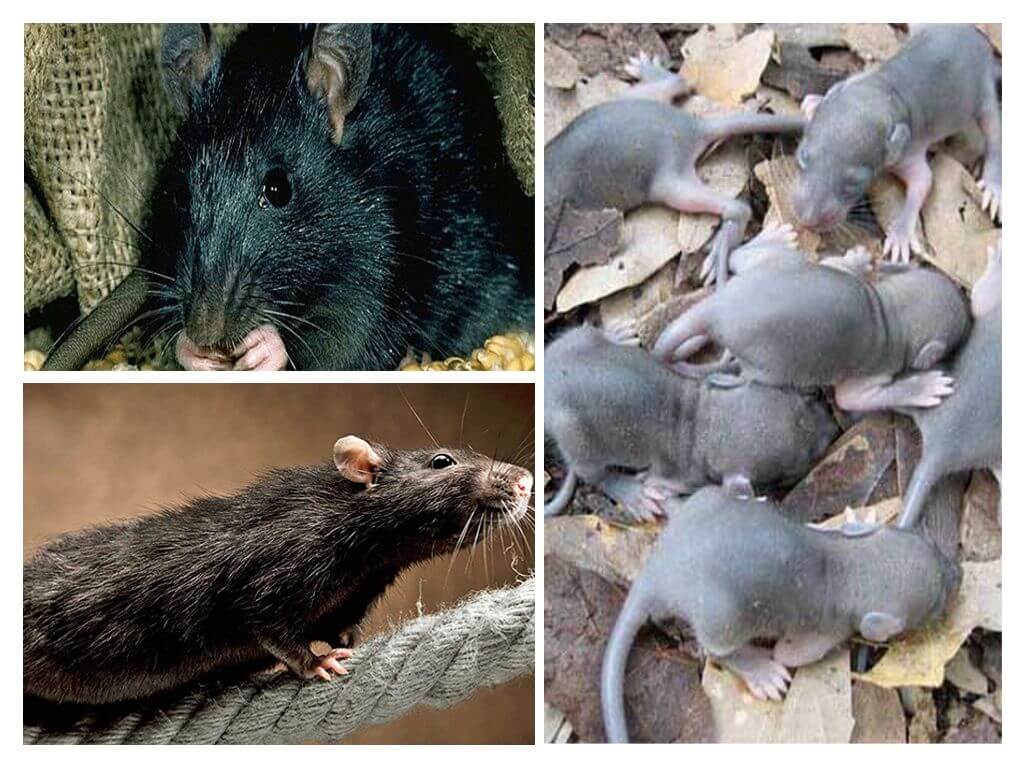
Black rats are less prolific than other species of rodents. In nature, they do not breed in winter and give three litters per year. The number of pups, on average, is six. In rare cases, the female brings 11 cubs.
Individuals living in warm homes breed throughout the year.The female gives birth from three to five times in 12 months. The number and survival rate of baby rats is slightly higher than that of animals living in the forest.
Kids are born helpless:
- their ears and eyes are closed;
- antennae are absent;
- the tail is short and thick;
- the function of thermoregulation is not developed.
Mother licks babies and feeds them with breast milk.
Interesting!
The female, sensing the approach of childbirth, builds a nest and makes a supply of food near it.
Two weeks later, the cubs open their eyes. Their body is overgrown with hair. A thin antennae appear near the nose. Independence baby rat begin to manifest on the twentieth day. Thirty days later, the brood of the black rat becomes independent.
Animals reach sexual maturity at 3-5 weeks. But at this age they still continue to develop. Only a year later, mammals reach their maximum size.
Nutrition
Black rats are picky in food. They are wary of unfamiliar products, which complicates the fight against them. A man has to go to tricks to outwit a sneak and feed him poison for rats.
On a note!
If one of the family gets harm from the new product, the remaining tailed ones will bypass the bait.
In nature, black rats can feast on worms or mollusks. Rodents climb trees and destroy bird nests in search of eggs. In households, the pest harms chicken coops and quail farms. Therefore, any farmer knows how to deal with rats in the chicken coop or house.
The main diet includes:
- seeds;
- cereals;
- fruit;
- nuts.
The rat does not disdain to feast on the remnants of human food, if it does not harm its body. The animal eats 15 g of food per day. The black rat does not tolerate water shortages. This explains her desire to live in port cities and on ships. The daily fluid rate reaches 20 ml.
A mammal is immune to some rat poisons. The animal will not be able to kill rats or zinc phosphide.
Lifestyle
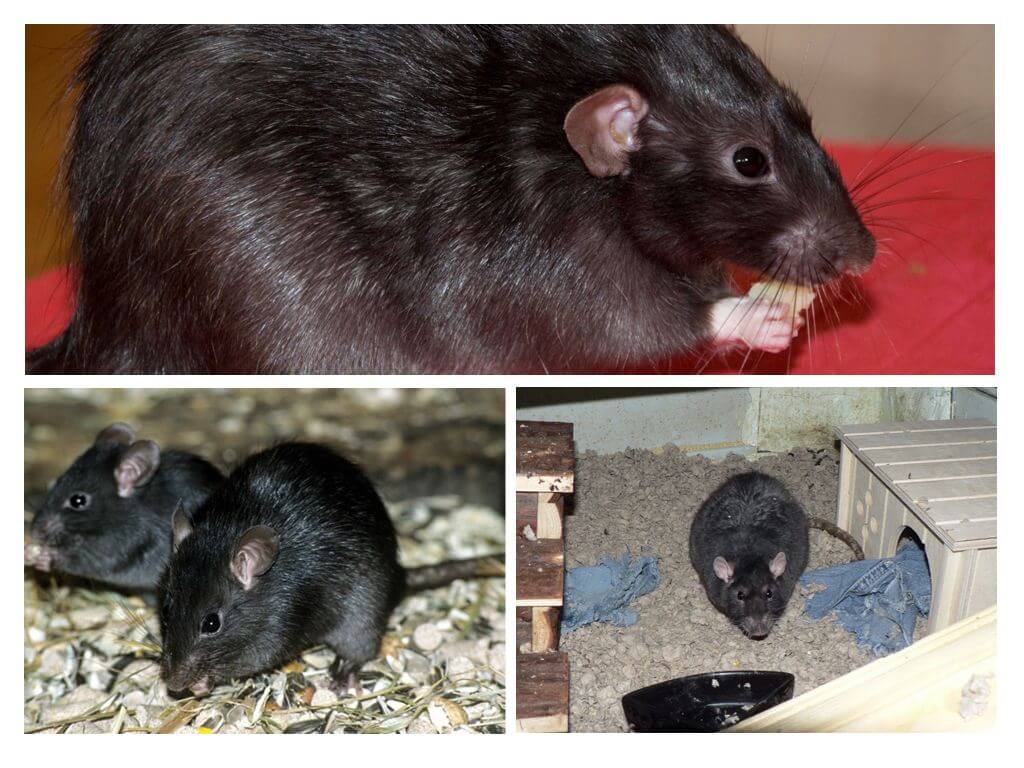
The active rat becomes black at night. A person determines the presence of a pest in a house by rustling, rat squeak and scraping sounds.
Rat life span depends on habitat:
- in nature, pests live 1-2 years;
- in captivity, the animal is able to live up to four years.
Rodents do not stray into large flocks. They prefer to settle in small groups - five to seven individuals. Each clan has a hierarchy. In the group there are:
- dominant;
- subdominant;
- subordinate male.
Mammals are able to live in any corner. They build nests in the ceilings of the house, elevator shafts, attics. The animals that do not belong to the pack are driven out of their territory.
Interesting!
People found rats in freezers. There rodents built nests from the tendons of animals.
Black rats are not as aggressive as the pasyuki that fight inside the group. In danger of these rats can even attack humans. The black look prefers flight. But if he is caught or cornered, he will try to defend himself and attack.
Spread
Previously, the black rat lived only in North Africa and in the subtropical zones of Eurasia. With the help of humans, the rodent has spread throughout the world. Now the habitat of the animal is reduced. But in regions with a warm climate, the animal continues to actively breed.
The spread of the pest occurs in the following ways:
- Through the goods transported by people by land, water and air.
- Alone on roads and railways.
Tiny paws run a few kilometers a day. The rat quickly finds a comfortable place to live and takes up a flock.
Enemies
The animal is not a predator. Other animals prey on him: owls, cats, snakes. Pasyukas also affect the decrease in the population of black rats. Owners of private homes specifically bred a cat to help fight the pest.
Interesting!
In villages, litter of kittens from the rat trap is often lined up. A cat teaches kids to hunt rodents.
People use not only the services of cats. Terriers are a breed of dog bred for hunting and killing rats.
Harm to humans
Mammals harm farmland by destroying grain and crops. Animals gnaw seeds, foliage and young stems. In the gardens they gnaw bark of trees.
Black kids also bring a lot of trouble to the residents of the apartments. They gnaw through wooden floors, spoil wires, destroy food. Fight rats in the apartment laborious and costly occupation.
During the transportation of products, the pest gnaws at containers and contaminates food with excrement. Like other types of rodents, black rats carry many dangerous infections.
The description of a black rat tells a person how to deal with a cunning invader. The pest is smart and careful. He will not approach suspicious objects and will not be tempted by a bait that does not inspire confidence. We have to constantly invent new methods of fighting the rodent.
